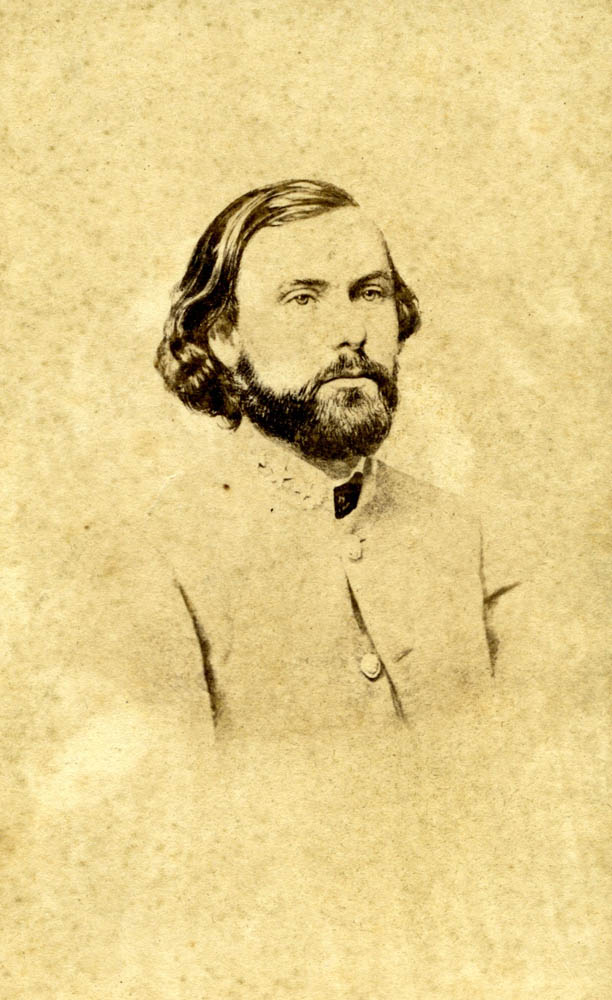Thomas Carmichael Hindman was born in Knoxville, Tennessee, in January 1828. He moved to Mississippi in 1841 and served with the 2nd Mississippi Infantry during the Mexican-American War. Hindman was admitted to the bar following the war and was elected to the Mississippi legislature; he then moved to Helena, Phillips County, Arkansas and was elected to the U.S. House of Representatives in 1858. Although re-elected in 1860, Hindman did not take his seat and campaigned for Arkansas to leave the Union.
When the Civil War began, Hindman served as colonel of the 2nd Arkansas Infantry, and was promoted to brigadier general in September 1861 and to major general in April 1862.
On May 31, 1862, Hindman assumed command of the Trans-Mississippi District, which consisted of Arkansas, Missouri, and the Indian Territory.
He intended to re-establish a viable Confederate presence in the region—a daunting task after the Confederate defeat at Pea Ridge, considering that General Earl Van Dorn’s beaten army had withdrawn to the east side of the Mississippi and Union General Samuel R. Curtis’ army had marched through northern Arkansas.
Hindman declared martial law throughout the district and immediately began issuing orders. The new commander burned cotton to keep it from the Federals, established facilities to produce military goods, enforced the Conscription Act, dismissed incompetent officers, and recruited partisan fighters. Despite public opposition, Hindman continued his successful methods.
Hindman’s accomplishments were impressive. In a matter of a few weeks, Hindman created an army and supply system practically from scratch.
Many well-to-do Arkansans complained to President Jefferson Davis, but he rejected their demands that Hindman be removed. Davis did decide to place Hindman under the command of a less controversial commander, and chose Major General Theophilus H. Holmes, a classmate from West Point.
In December 1862, Hindman saw an opportunity for his army to crush a Union force under the command of General James Blunt in northwest Arkansas. Blunt had pursued the forces of General John Marmaduke after a victory at Cane Hill, Arkansas; in the process he had isolated his division by more than 100 miles from his supporting units.
Hindman’s plans were foiled by the efforts of the 2nd and 3rd Divisions of the Army of the Frontier under the command of General Francis Herron. Herron marched his men more than 100 miles in three and a half days, and on December 7 attacked Hindman’s army at Prairie Grove, outside Fayetteville. After furious fighting, when it seemed as though Herron might be overwhelmed, Blunt arrived on the field. The battle ended as a tactical draw, but Hindman withdrew south to Van Buren.
After leading a division at Chickamauga and through the first part of the Atlanta Campaign, Hindman spent the remainder of the war recovering from a wound received at Kennesaw Mountain in June 1864.
When the war ended he went to Mexico with Sterling Price, but returned to Helena, where he was assassinated in his home in September 1868.
Carte-de-Visite by E. & H. T. Anthony, New York, N.Y.
Image Courtesy Wilson’s Creek National Battlefield; WICR 31880




